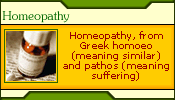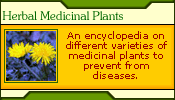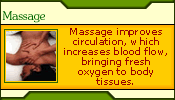|
The word 'Temperament' used as noun literally means "characteristic
combination of physical, mental and more qualities, which together
constitute the character of an individual and affect his manner
of acting, feeling and thinking". Its adjective, 'Temperamental',
besides relating to temperament means the variable or unaccountable
moods. In modern medical terminology 'Temperament' means "the
peculiar physical character and mental cast of an individual".
Thus we see that the "moral qualities" are excluded from
the total characteristic combination of a man in modern medical
science. The concept of the 'Temperament' in all the eastern sciences,
however, is 'holistic' and embraces all the qualities of a man,
whether it be physical, mental, moral or spiritual.
Before discussing the temperamental theory in the Unani sciences
of treatment, it is expedient to trace its origin and determine
the actual purport of the term 'Temperament'.
The ancient Greeks held a variety of opinions about the elemental
composition of nature. Anaximonas of Miletus (6th C.B.C.) believed
that water was the only element. Hippocrates (C469 - C357 B.C.)
is supposed to have believed in two elements - air and water, as
he owes a treatise on "Air, Water and Places" as the first
book on physiotherapy to his credit. But Empedocles (490-430 B.C.)
who was born in Argentum, Sicily, and was the disciple of Pythaqoras
and Permenides, had a philosophy that attempted to combine the technique
of the Eleatic school with the doctrine of Heraclitus (573 B.C.).
He believed that the universe is a compound of four basic elements
- earth, air, fire and water, which combined in various proportions
form different things. These elements are thought to be related
to one another through four qualities, viz., coldness, wetness,
hotness and dryness, which also gave the elements their 'characteristics'.
It was thought that one element could be transformed to another
by changing their qualities. Thus the qualities or characteristics
of the four elements can be termed as the basic concept of 'Temperament'.
But historically the concept of 'Temperament' originated with the
Hippocratic school of Medicine and was based upon a theory of varying
proportions of the four body humours or excretions in the body -
(Latin "tempero" to mingle "compound in definite
proportion"). These four fluids - blood, phlegm, black bile
or melancholy and yellow bile… produce according to their degree
of predominance the sanguine, phlegmatic, melancholic and choleric
temperament. The various mixtures of these humours in different
men determined their 'complexion' or 'Temperament'.
After the fall of the Roman Empire all knowledge and learning were
transferred to the Arabs. But the journey of 'Temperament' again
took its course in Europe after the 10th century, which continued
even after the renaissance upto the 17th Century. During this period,
a rapidly growing number of classical medical texts were translated
from Arabic to Latin. Islamic works such as the "Canon"
of Avicenna and clinical treatises of Rhazes were also translated.
The theory of four 'humours' and 'qualities' remained the basis
of explanation of health and diseases. John of Gaddesen (1280-1361
A.D.) the pattern of the "Doctor of Physick" in Geffrey
Chaucer's (1340 -1400 A.D.) Canterbury Tales, was one of the English
students there, and he relied upon 'astrology' and upon the 'humours',
which is evident from Chaucer's description.
Well could he guess the ascending of the star,
Wherein his patient's fortunes settled were,
He knew the course of every malady
Were it of cold, or heat or moist or dry.
In the Vedic philosophy of India also, health was viewed as a balance
of elements, the 'dhatus' and a happy mental state called 'prasana'.
Disturbance of this equilibrium brought illness and forced the healer
to investigate the causal factor, especially the status of three
internal waste products or 'doshas' - wind, bile and phlegm. The
goal of Hindu medicine was holistic. Restoration of the 'tridosha'
and 'dhatu' balance with diet and drugs, while eliminating the accompanying
mental anguish. In the language of Hindu philosophy the three primordial
elements air, fire and water stand for the three 'doshas' - vat,
pitta and kapha, respectively. The elements according to Hindu philosophy
are earth, fire, water, air and ether (akash).
It is therefore evident, that the theory of elements, humours and
temperament is existent in all the ancient sciences. As for Homeopathy
which was introduced by Christian Friedrick Samuel Hahnemann (1755-1843
A.D.) it is aimed mostly on his "minute dosage rule".
The Hahnemannean concept of psora, syphilis and psychosis as the
cause of every disease does evidently take the place of humours.
And the varying potencies of drugs can be termed as a correspondence
to the varying temperament of disease or patients in treating diseases.
In addition to this primary concept, there is a classification of
drugs suited to various medicinal temperaments in Homeopathy. Moreover,
the late Dr. Binoytosh Bhattacharya (1897-1964 A.D.)of Naihati (W.
Bengal) has very dexterously introduced the Ayurvedic principle
of 'Tridosha' or three humours in Homeopathy which is now gaining
worldwide popularity.
With the gradual expansion of the Islamic Empire, however, a comprehensive
body of Greco-Roman medical doctrine was adopted together with extensive
Persian and Hindu medical practices. In accordance with basic religious
and philosophical ideas, healing involved both body and soul, and
human health could only be achieved through harmony with the entire
cosmos. Unani therefore, is a balanced synthesis of all the existing
medical sciences known at that time, and is still incorporating
the new practical knowledge suited to its own temperament, but most
evidently it is generally Greco-Islamic science.
|















